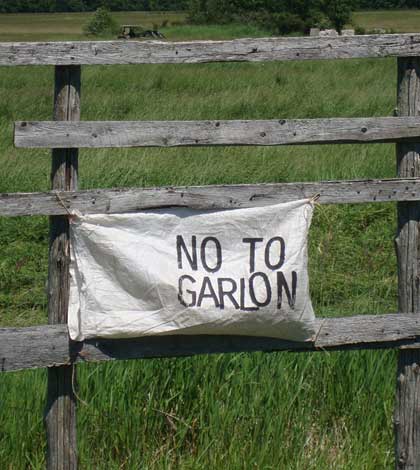To the Expositor:
I was out walking my dogs two weeks ago in the Square Bay area of Manitoulin Island. As I rounded a corner I spotted two Hydro One workers with gloves, respirators, overalls, and face shields liberally applying what I later found out was Dow’s ‘Garlon TM RTU’ all along the Square Bay Road and Birch Way. I noticed a freshly-posted sign announcing the spraying. I had walked the same area the previous day and had encountered no signs. The signs were placed 700 feet apart and might not be seen by all impacted by the spraying. Hydro had not given us prior warning for the spraying. My dogs were running through the freshly sprayed areas. I got them out as quickly as I could and left them with a neighbour. I ran back to talk to the workers but they were gone.
I was told later by Hydro One that they had prior permission for the spraying from the two landowners who were closest to the treated areas. It is noteworthy that one owner spends about two weeks a year here and his well is located right in the spray area, close to the hydro pole. It is not likely that he gave permission for the spraying. The other landowner recalled giving permission to cut trees and foliage as required, but not for spraying.
In rural areas, most of us depend on wells so whatever is sprayed on the surface eventually finds its way into the ground. The Dow website indicates Garlon should not be sprayed ‘after the leaves turn’ as the herbicide kills by increasing growth. How much growth are we likely to achieve in November?
Hydro did comply with our request not to spray directly on our property but they sprayed Garlon about 12 feet from the edge of our lot and about 15 feet from a low area on our land that drains toward our shallow 10 foot well.
A supervisor and hydro worker came to offer explanations and that was appreciated. A data sheet they provided about Garlon states one “should wash skin with soap and water for 20 minutes, call a poison control centre or a doctor for treatment advice. Clothing items that can’t be washed should be disposed of. It is toxic to aquatic organisms and birds.”
They claimed that this spraying saves Hydro One money. I responded that we have been living here since 1975 and we have never personally encountered spraying by Hydro One of any kind. In addition, the area sprayed is covered by short shrubbery of three feet or less. Here, hydro lines are downed by falling trees, not three-foot shrubs. The trees were left largely untouched.
In conclusion, spraying is really not needed in some locations, and is not likely to be effective or a cost-saving in November, after the growing season, in any area, leaving more of the chemical to be drawn into the soil. It is also not effective since it kills only short plants and does not deal with the trees that actually down hydro lines here. Also, we will now have to test our water for chemicals, a costly service not provided by Public Health. How long does it take for the chemicals to reach our well?
In my opinion, Hydro One risked our health unduly and wasted money on this task. Since it is highly likely we will pay for Hydro One’s debt into eternity, in the wake of the windmill onslaught, it could be advantageous for them to rethink their position about the spraying.
Petra Wall Spring Bay





